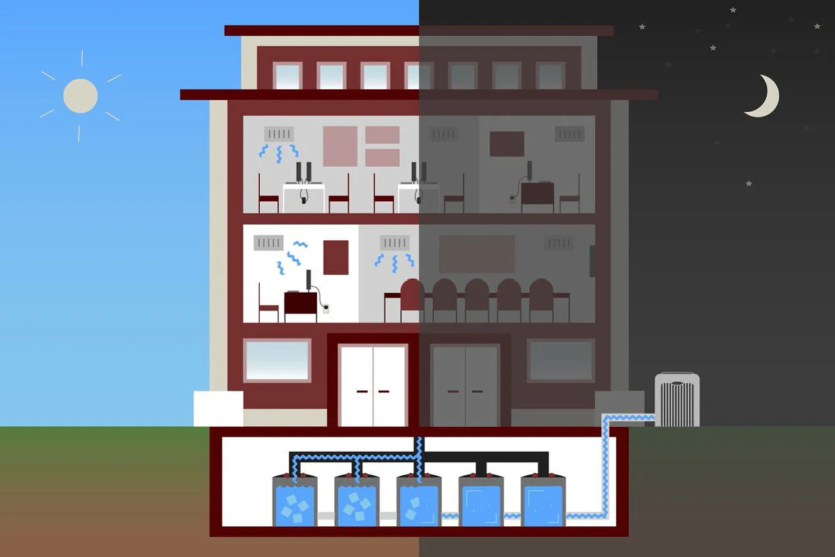
American researchers from the The University of Texas has presented a new concept of so-called “ice batteries”, that will freeze water or other substances during the night and use the stored cold for cooling buildings.
The study, led by Dr Patrick Schamberger of the department of Materials Science and Engineering, offers solutions to the key problems of this technology, among other things, improving the efficiency of materials inside cooling systems and extending the period of their stable operation. Schamberger, in particular, specializes in on the research of materials used to store and release thermal energy.
“Ice battery technology has been around for some time. But I am interested in questions related to materials: what material is suitable for the right temperature? Is it possible to make it reversible? Can it be made to last for 30 years?” — explains the research leader.
Although these systems consume much less electricity during the day, they are still powered by the grid at night to cool water or other substances. Larger systems freeze about 250 tons of ice every night.
Researchers, led by Patrick Schamberger, is being developed by salt hydrates and other compounds, capable of storing and releasing heat energy at the most optimal temperatures for the environment. By adapting the temperature range of these materials, developers aim to increase energy efficiency and make them more compatible not only with cooling systems, but also with heating systems.

“We set it to a certain temperature, so that it is compatible with a certain approach to HVAC integration”, — says Patrick Schamberger.
One of the most serious technical problems is the so-called “phase separation” — in many salt hydrate systems, the material separates into different solid and liquid phases with different compositions and densities. Over time, this can degrade the system’s performance. As part of the research, scientists were looking for ways to solve this problem. The goal is to identify more stable compositions that can cycle reliably for many years.
The more general goal of the researchers from the team Schamberger’s is to create a more flexible and stable energy system. As renewable energy sources, such as solar and wind, become more widespread, the energy system is facing increasing instability in both supply and demand. Technologies, that can reduce energy consumption during peak hours, are becoming increasingly important.
“We do not want to solve the problems of the power grid by building new power plants. This is a very expensive solution, and they will have to charge higher tariffs in general”, — explains Schamberger.
By storing cold during periods of low electricity costs and using it during periods of high demand, buildings can reduce energy costs and help stabilize the power grid. According to Patrick Schamberger, the ideal system should be compatible with existing heating systems, ventilation and air conditioning and operate automatically.
The results of the study are published in the journal The Journal of Physical Chemistry
Source: TechXplore

Spelling error report
The following text will be sent to our editors: